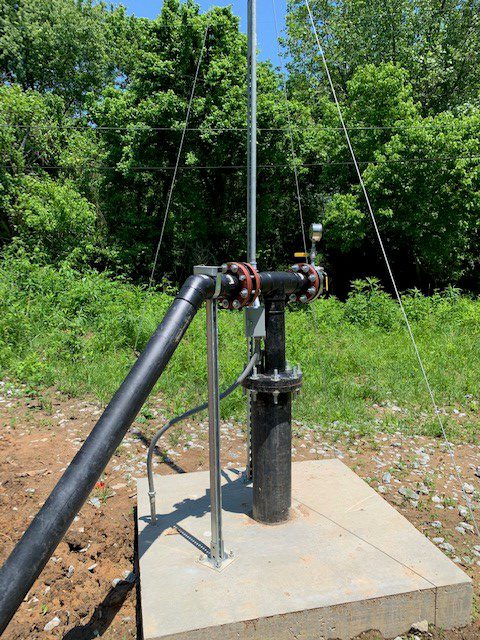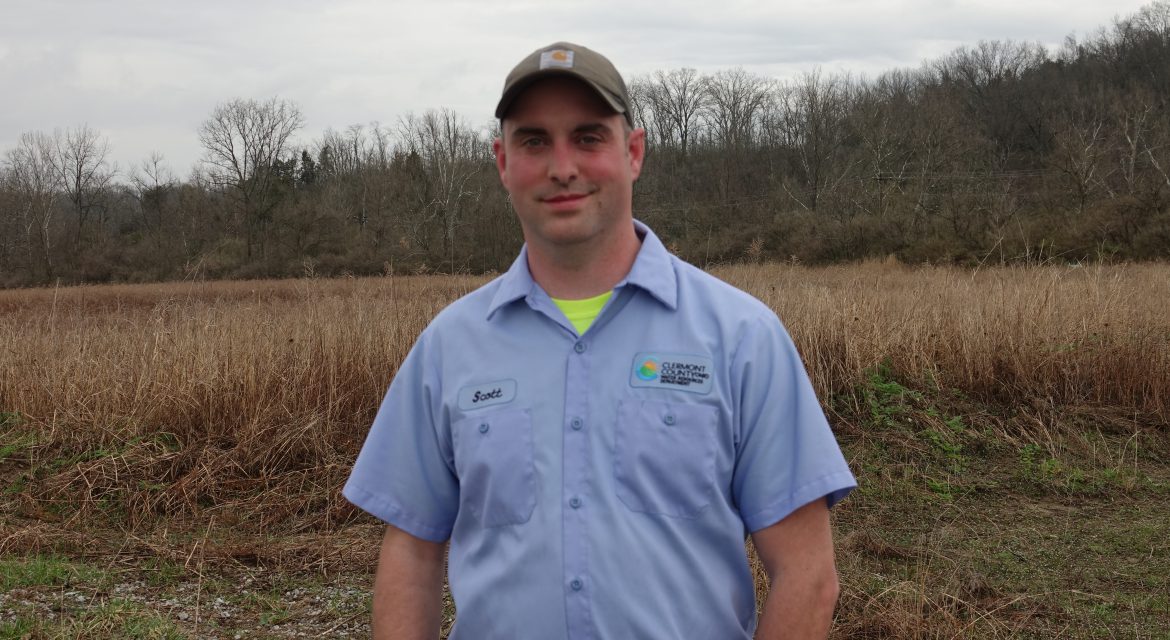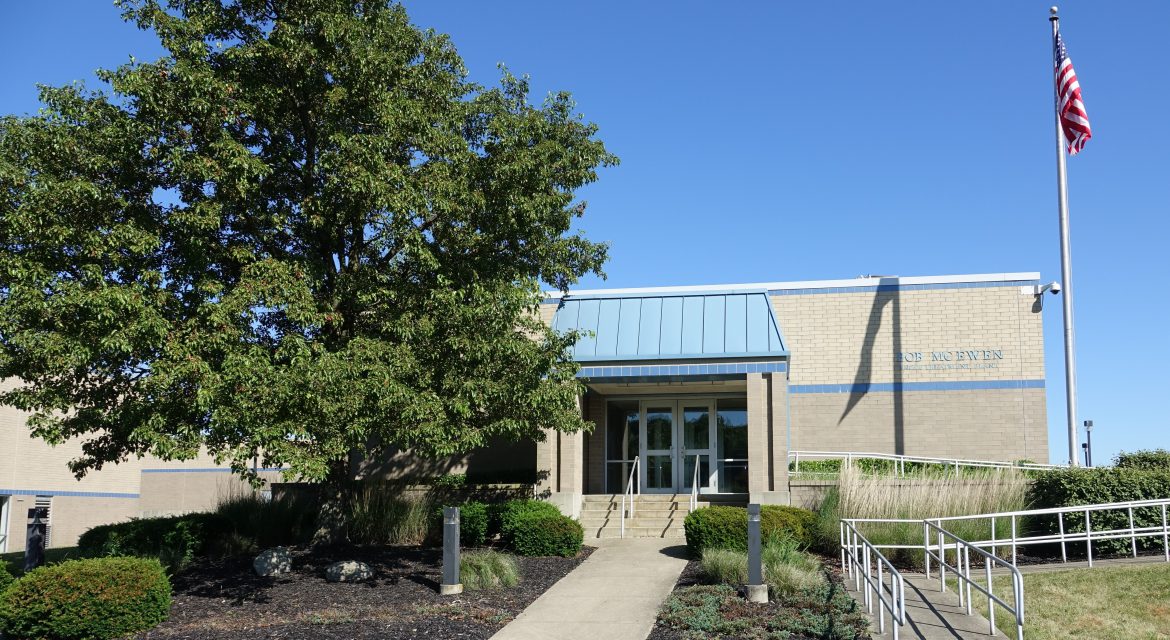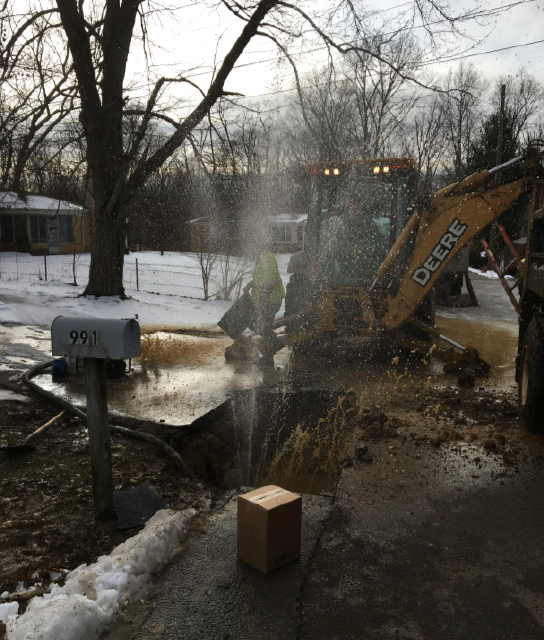BATAVIA, OH — The Clermont County Water Resources Department’s 5-year Capital Improvement Plan (2021-2025) calls for many improvements to water mains, water tanks and sewers.
The waterworks plan calls for 60 waterworks capital improvements valued at $32.9 million, including 26 water main replacement projects ($16.8 million), eight elevated water tank inspection, rehab and painting projects ($4.3 million), 10 water treatment plant and well field improvement projects ($3 million), seven new infrastructure/expansion projects ($3.7 million) and three petition/assessment projects ($1.2 million).
The wastewater plan calls for 56 wastewater capital improvements estimated at $63.9 million, including 15 sewer replacement/rehabilitation projects ($22.6 million), nine lift station replacement, upgrade or elimination projects ($10.4 million), 10 wastewater treatment plant improvement or elimination projects ($13.0 million), four new infrastructure/expansion projects ($3.3 million), and eight petition/assessment projects ($12.9 million).
Waterworks capital improvement funding includes:
Available funding (2021-2025) $45,686,096
Wastewater capital improvement funding includes:
Available funding (2021-2025) $62,369,811
Water main replacement projects include:
Elevated water tank inspection, rehab and painting projects include:
Sewer replacement/rehabilitation projects include:
Lift station replacement, upgrade or elimination projects include:
Wastewater Treatment Plant Improvements or Elimination projects include:

A second interceptor well is being constructed at the Beckjord Power Station site in New Richmond. The well will serve as a backup in case the original interceptor well fails. Operation of the well, which helps protect county-owned drinking water wells from contamination, is expected soon.
In the early to mid-1990’s, Cincinnati Gas & Electric (aka Duke Energy) performed an investigation of the groundwater near the Beckjord Power Station. As a result of the investigation, an elevated-sulfate groundwater plume was identified. This plume originates from the power station’s ash ponds and extends towards the County-owned drinking water well fields that provide the raw water for the County’s P.U.B. Water Treatment Plant. In order to help protect the County’s drinking water wells, Duke Energy installed an interceptor well to capture the sulfate plume. The interceptor well initiated pumping on Feb. 4, 1994 and continuously removes groundwater with elevated sulfate concentrations and discharges it to the Ohio River under an NPDES Permit issued by the Ohio Environmental Protection Agency (OEPA).
Since the installation of the interceptor well in 1994, quarterly groundwater monitoring reports have been submitted to OEPA, with copies sent to Clermont County. These reports present and summarize analytical results from about 30 monitoring wells and piezometers located across the Beckjord property. Within the reports, sulfate concentrations are used to monitor the movement and location of the contaminated groundwater plume.
In 2014, Duke Energy shut down the Beckjord Power Station. Then, in early 2018, ownership of the Beckjord Power Station property was transferred from Duke Energy to New Richmond Development Corporation (NRDC). Since then, NRDC has been working to decommission the former power station in accordance with Ohio EPA requirements. NRDC continues to operate and maintain the interceptor well and submit quarterly groundwater monitoring reports to Ohio EPA and Clermont County.
Ohio EPA is the regulatory authority for all decommissioning work and environmental protection efforts at the former Beckjord Power Station site. In an effort to help protect the citizens of Clermont County and our water resources, Clermont County regularly reviews groundwater monitoring reports and other information prepared by NRDC. Following these reviews, Clermont County often provides comments, concerns and recommendations to Ohio EPA. In 2019, Clermont County provided recommendations to Ohio EPA which included the installation of a second interceptor well to provide redundancy in the event the original interceptor well experiences failure. Ultimately, Ohio EPA supported this recommendation, and on October 20, 2020, approved the Permit to Install for the second interceptor well. NRDC has initiated construction of the second interceptor well and has indicated it will be operational in the very near future.

With his team facing dangers such as trenches collapsing and working along busy roadways, Water Distribution Supervisor Scott Green keeps safety in the forefront.
Green collaborates with Clermont County Safety Coordinator Gary Caudill to ensure the four field supervisors and 16 field personnel in Water Distribution get the proper training and tools to do their jobs safely.
“Scott is always promoting safety,” Caudill said.
Green sends daily work assignments to Caudill, allowing him to go to worksites to ensure safe practices. The supervisor also initiates safety stand-downs, meetings where team members review incidents to discuss ways to prevent future occurrences. He goes over Caudill’s monthly “toolbox talks” with his employees and returns follow-up sheets.
“I have a good relationship with Gary,” Green said. “He has a lot of knowledge from his years of experience. He knows dangers in the workplace and what we’re doing. He’s always willing to train new guys, many who start here fresh out of high school.”
Even though they try to work fast because people want their water service restored, Water Distribution employees need to be careful. For example, it’s important for them to use proper techniques to hydraulic shoring and employ trench boxes to prevent collapses while working on water lines.
Ohio Bureau of Workers Compensation statistics show that safety champions like Green are helping build a safety culture at Clermont County.
The county went from a high of 68 claims in 2018 to just nine in 2021. Caudill can pinpoint that during the past seven years, most claims have come on Tuesdays and in the month of June. By far, most happened between 8:01 and 10 a.m. That allows him to work strategically with supervisors like Green.
“I’m grateful to the people like Scott who champion safety at Clermont County,” Caudill said. “They’re truly making a difference.”
Clermont County Safety Champion is a periodic feature showcasing employees to contribute to the growing safety culture in our workplace.

BATAVIA, OH — At 11:44 a.m. Feb. 20, an elderly male on a trail at Sycamore Park experienced difficulty breathing. He called 911 on his cell phone, unable to move from the spot several hundred yards off the main parking lot area.
Thanks to earlier collaboration among a number of governmental units, first responders pinpointed the man’s location and brought care within minutes.
Clermont County Public Safety Services, the GIS Division in Community and Economic Development, the Central Joint Fire-EMS District, Clermont County Water Resources and Clermont Soil and Water had worked together to bring more-precise digital maps to dispatchers and first responders.
Through sophisticated Geographic Information Systems (GIS) and Computer Aided Dispatch (CAD), the GIS Division had collaborated with the other entities on the upgraded maps.
“It just goes to show that things that go on behind the scenes can have such a large impact,” said Greg Bickford, Assistant County Administrator. “Who would think that mapping out trails would someday lead to service by first responders?”
John Kiskaden, Director of Public Safety Services, said: “Dispatcher Daniel Cayse used the tools in our toolbox to locate the individual rapidly. One of these tools was that GIS went in and put river mile markers for us. Without these tools in the toolbox, the dispatcher had a harder time doing the job. This time everything worked correctly: The dispatcher got the call, they were able to use the river mile markers to narrow down where the distressed individual was. From the time we received the call to the time of the patient contact was 10 minutes. That’s pretty good. In this case, everything turned out OK.”
GIS Administrator Kelly Perry added: “The dispatcher was fantastic in knowing that they could attach the call to the closest verifiable point, which in this case was a river mile marker and not an address point. They were able to show that the patient was not at the main part of the park, near the entrance, but down a trail. The dispatcher realized if they attached to call to the address, that the responder would have to figure out where he was. They might have known he was down a trail, but the cell phone data allowed them to pinpoint where he was.”
Perry explained that prior to “river miles” being added to the system, the call would have been attached to the address point. River miles markers are digital map markers showing distances from the mouth of a river or stream. Having these markers in the CAD mapping serves to provide additional “verifiable locations” which dispatchers can use as the location for a call.
This change goes back to January 2020, when Joe Stoffolano of Central Joint Fire and EMS had asked GIS if they could get river miles into their system so they could practice swift water rescue. At the time GIS was shorthanded and didn’t have the time to digitize river miles. Perry found United States Geological Service (USGS) maps with river miles handwritten on them. She was able to overlay them, in pre-planning maps, but not in the Computer Aided Dispatch (CAD). So Perry asked Bill Mellman at Water Resources if he had knowledge of river miles or could digitize. He did some digging and found that Clermont Soil and Water had an intern from Miami University, who did the digitizing for GIS. Mellman scrubbed them and sent them to GIS. GIS Analyst Chris Bussell got the points added into the CAD.
“We’re on a statewide 911 system and we do quarterly updates for them,” Perry said. “Wouldn’t you know that the update had happened the day before, but we knew we didn’t want to wait. Chris Bussell reached out to a state contact and explained the situation. He made an exception and got them into the map right then.”
Perry recalled that Stoffolano emailed and thanked the team. She responded that river miles were great, but it would be better to have trail markers in the GIS and CAD system. Since then, Perry has reached out to Chris Clingman, Clermont County Park District, to get even more detailed location points into the system.
Kiskaden said the GIS Division works in unison with Public Safety Services’ CAD administrator Dominick Daulton and project manager Jessica Wiederhold to make sure that all 911 addressing is current and up to date with phone companies. They also work to make sure that mapping is updated for first responders’ mobile data.
“Location is key,” Kiskaden said. “If you don’t know where people are, you can’t help them. The longer it takes you to find them, it can be critical or life-threatening.”
Michael McNamara, Director of Clermont County Community and Economic Development, added: “The bottom line is that our behind-the-scenes work at Public Safety Services and in our GIS Division means a big difference when somebody is in distress. Departments working together, and our employees going the extra mile, make a big difference in the lives of Clermont County citizens.”

BATAVIA, OH — Clermont County Water Resources invites its customers to participate in a brief survey: https://www.surveymonkey.com/r/M5MFWQP Please respond by 4:30 p.m. Dec. 23. The survey only takes a few minutes to complete.
In 2021, average residential water and sewer bills (due every two months) would increase by $5.88 under recommendations made by the NewGen Strategies & Solutions consulting firm at the Dec. 2 Board of County Commissioners meeting. Commissioners had a Q/A session on Dec. 8 and are expected to vote on final recommendations on Dec. 28.
Annual rate increases (for years 2021-2025) are projected to increase revenue 9.5 percent for water and 3 percent for sewer each year and would help pay for ongoing replacement of an aging treatment, distribution and collection system as well as regular maintenance and operation.
Clermont County by far has the lowest water and sewer rates in Southwest Ohio, according to NewGen. Rates for the City of Cincinnati more than double Clermont County’s. Sewer rates are currently less than the 1993 rates and the last water rate increase came in 2015.
For a look at the presentation, please click here: Clermont County Recommendations Presentation (2020-12-02)
You may also email comments to: watersewer@clermontcountyohio.gov
Or mail them to:
Clermont County Water Resources Department
4400 Haskell Lane
Batavia, OH 45103
Attn: Lyle Bloom
###

BATAVIA, OH — In 2021, average residential water and sewer bills (due every two months) would increase by $5.88 under recommendations made by the NewGen Strategies & Solutions consulting firm at the Dec. 2 Board of County Commissioners meeting.
Annual rate increases are projected to increase revenue 9.5 percent for water and 3 percent for sewer and would help pay for ongoing replacement of an aging treatment, distribution and collection system as well as regular maintenance and operation.
“We pride ourselves in providing affordable water and sewer rates,” said Lyle Bloom, the director of the Clermont County Water Resources Department. He noted that sewer rates are currently less than the 1993 rates and the last water rate increase came in 2015.
Clermont County by far has the lowest water and sewer rates in Southwest Ohio, according to NewGen. Rates for the City of Cincinnati more than double Clermont County’s.
NewGen recommends that Commissioners adopt the annual rate changes for 2021-2025, with an annual review and revisions as needed.
A question-and-answer session is planned for the Dec. 8 Commissioners’ meeting, with a formal recommendation planned for Dec. 23.
For a look at the presentation, please click here: Clermont County Recommendations Presentation (2020-12-02)
BATAVIA, OH – Recent sampling of Clermont County’s water system for chemicals called Per and Polyfluoroalkyl Substances (PFAS) found no detection of PFAS — the chemicals in the movie Dark Waters, about a town in West Virginia whose groundwater is contaminated by a neighboring chemical company. The Ohio Environmental Protection Agency (OEPA) has been sampling water systems across the state.
“This is very good news,” said Lyle Bloom, Director of Clermont County Water Resources. “All three of Clermont County’s water treatment plants were sampled as part of Ohio’s Statewide PFAS Action Plan for Drinking Water and there was no detection of PFAS from the raw or finished water at any of our treatment facilities.”
The plan calls for Ohio EPA to gather data from public water systems statewide to determine if PFAS are present in drinking water. The water system was sampled for six individual PFAS contaminants: PFOA, PFOS, GenX, PFBS, PFHxS, and PFNA.
PFAS are a group of man-made chemicals applied to many consumer goods to make them waterproof, stain resistant, or nonstick. PFAS are also used in products like cosmetics, fast food packaging, and a type of firefighting foam called aqueous film forming foam (AFFF) which are used mainly on large spills of flammable liquids, such as jet fuel. PFAS is also called the “forever chemical” because they are not easily broken down by sunlight or other natural processes. They may remain in the environment for many years.
PFAS can enter drinking water at sites where they are made, used, disposed of, or spilled. Some, but not all, studies in humans with PFAS exposure have shown that certain PFAS may: affect growth, learning and behavior of infants and children; lower a woman’s chance of getting pregnant; interfere with the body’s natural hormones; increase cholesterol levels; affect the immune system; or increase the risk of certain cancers. Scientists are still learning about the health effects of exposures to mixtures of PFAS.
In 2013, Clermont County performed sampling and analysis at all three of its water treatment plants. At that time, there was also zero detection of PFAS. There are currently no national drinking water standards (Maximum Contaminant Levels or MCLs) established for PFAS compounds; however, OEPA adopted Action Levels ranging from 21 to 140,000 ng/L for various PFAS chemicals. Ohio EPA will be establishing response protocols for public water systems in Ohio when action levels are exceeded, including public notification and issuance of drinking water advisories.
Ohio EPA also has a website dedicated to PFAS with additional information: https://epa.ohio.gov/pfas
###

How was your Memorial Day weekend? The folks working in Clermont County’s Water Resources Department’s water treatment plants had an eventful weekend, for sure.
Because the demand for water never stops, plant operators reported to work like any other day.
As thunderstorms began to pop up on Saturday, May 23, the operators at the county’s three water treatment plants kept close watch. Experience has shown them that lightning and electrical equipment don’t play well together.
While lightning storms regularly cause power flickers and occasional surges that damage equipment, this particular storm caused catastrophic damage to major equipment.
In the midst of the storm, the Bob McEwen Water Treatment Plant near East Fork State Park lost total power.
A maintenance technician was called in to help assess any damage. The emergency backup generator at the plant was turned on but that did not solve all the problems. Duke Energy was called and a few hours later responded, after the maintenance technician discovered that Duke needed to reset some of their equipment out on the street. Duke’s equipment was reset and power was restored to the plant but the pumps at the raw water intake (a couple miles away from the plant) still would not run.
After diagnosing potential problems, it was assumed that a transformer was the cause of the power loss. The maintenance technician called an electrical contractor to confirm their suspicions and see if the contractor could find a replacement transformer.
But this was now Sunday morning on a holiday weekend. The electrical contractor confirmed what the maintenance technician suspected. Unfortunately, they wouldn’t be able to do anything until Tuesday morning since all their suppliers would be closed.
Meanwhile, the operators at the plant were juggling the treatment plant, avoiding any treatment violations while trying to treat and pump out as much water as possible while not being able to bring in any additional raw water.
The plant that was out of service is typically responsible for 30-50 percent of the total system production during this time of year.
The operators at the other plants were keeping an eye on the water demand in the system while trying to increase their pumping rates knowing that the likelihood of an extended outage at one plant means the demand on the other plants will certainly be maxed out.
Demand for water on Sunday and Monday didn’t decrease and water levels in the system slowly beginning to drop. Several changes were made to pumping strategies and valve positions in an effort to maintain pressure across the entire system.
As Tuesday morning came, the system had limped along avoiding depressurization but the problem still needed to be solved. The electrical contractor informed the county that a replacement transformer may take days, if not weeks, to find, transport, and install. The decision was quickly made to rent a mobile generator while a permanent solution was found. That was a major undertaking but by early Tuesday evening, the generator (which has to be refueled at least once every day) was hooked up and running.
Now the operators had to restart the plant ensuring everything was meeting EPA regulations which was no small task after being down for roughly three days. In addition to getting the plant back online, all the samples that normally are collected throughout the day had to be collected and analyzed within a few hours.
Keep in mind that this is the longest shut down of the plant since it was put in service in 1995.
Many options were considered and eventually a new transformer was found locally and arrangements were made to have it transported and installed as soon as possible. The transformer arrived in the afternoon on Friday, May 29. The plant once again had to be shut down so the generator could be disconnected and the new transformer reconnected.
By late afternoon on Saturday, everything was back up and running. The operators once again had to restart the treatment process and collect samples.
Looking back on the events of the week, the maintenance staff, operators, supervisors, and managers all performed exceedingly well in the face of adversity.
To repeat a phrase we’ve been hearing all too often lately, this was truly an unprecedented time.
So the next time you have a long holiday weekend and turn on the faucet to wash your hands or get a glass of water to drink, think kindly of the Water Resources Department staff because they will still be working.

BATAVIA, OH — The Clermont County Water Resources Department’s 5-year capital improvement plan (2020-2024) calls for many improvements to water mains, water tanks and sewers.
Lyle Bloom, the department’s director, explained the plan to the Board of County Commissioners in their May 20 meeting. Official approval is planned within the next several weeks.
The plan identified 58 water works capital improvements valued at $35.4 million, including 25 water main replacement projects ($22.5 million), elevated water tank inspection, rehab and painting projects ($3.1 million), water treatment plant and well field improvement projects ($3.4 million), new infrastructure/expansion projects ($6.2 million) and petition/assessment projects ($167,000).
Water main improvement projects include more than 665,000 feet (126 miles) of water main upgrades. The water mains were installed, 1954-1959, with a useful life of about 80 years. In 2020, Water Resources plans to replace 20,000 feet. By 2033, about 40,000 feet per year will be replaced. Projects are prioritized based on water main break frequency and the impact of breaks. When possible, Water Resources coordinates with the Transportation Improvement District and ODOT.
The plan calls for 59 wastewater capital improvements estimated at $64.1 million, including 21 sewer replacement/rehabilitation projects ($24.2 million), 12 lift station replacement, upgrade or elimination projects ($12.4 million), 12 wastewater treatment plant improvement or elimination projects ($12.4 million), new infrastructure/expansion projects ($2.5 million), and petition/assessment projects ($12.6 million).
Waterworks capital improvement funding includes:
Available funding (2020-2024) $39,527,844.00
Wastewater capital improvement funding includes:
Available funding (2020-2024) $59,470,634.00
Water main replacement projects include:
Elevated water tank inspection, rehab and painting projects include:
Sewer replacement/rehabilitation projects include:
Lift station replacement, upgrade or elimination projects include
Clermont County Water Resources Department is aware of discolored water in a portion of our water distribution system. The discoloration may be described as a light brownish/yellow tint or the color of diluted tea.
This is a result of manganese being oxidized during the disinfection process at the water treatment plant. Consumption of the discolored water is safe. We recognize that the water is not aesthetically pleasing and are actively working on correcting the problem. However, even after the disruption at the treatment plant is corrected, it will still likely take 24-48 hours to pass through our distribution system.
We apologize for any inconvenience this may have caused.